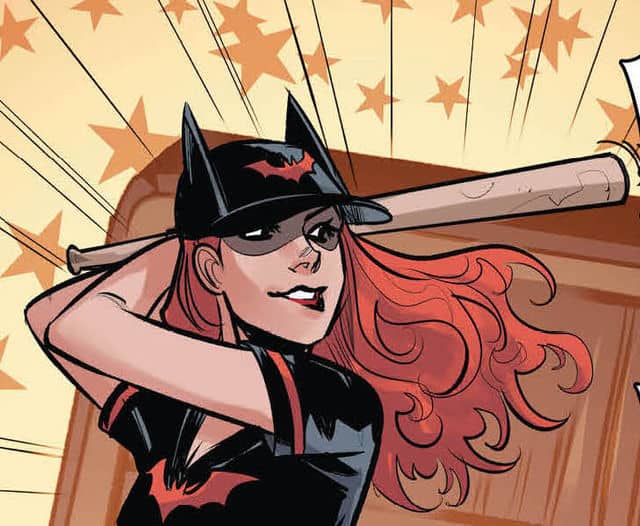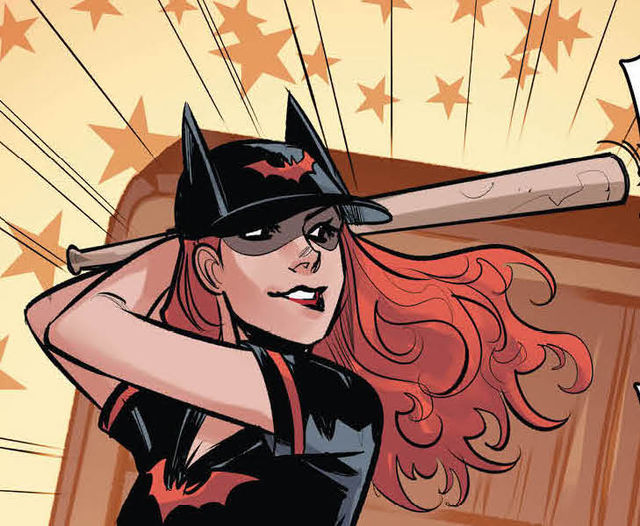
In the fall of last year I introduced you to Bombshells United: American Soil, the second book in DC’s Bombshells series. The Bombshells are back at it again with#8 Bombshells United: War Bonds! This time the focus is on Batwoman and her relationships. What makes Bombshells special is its representation of women in an era where women were seen as “tools for the war.” We had our Rosie the Riveters, but stories about women during that time are a little more complex than our American history books like to show.
In Bombshells, Batwoman is fantastic baseball player, a superhero and a lesbian. This particular detail of her being an LGBTQ-identified person in a comic book set in the 1930s and 1940s shows how much the comic book industry has grown. More importantly Maggie Sawyer’s — AKA Batwoman — sexuality is not seen as a tool but is a part of her identity. The story does not hinge on her sexual identity, but instead focuses on her relationships and how those relations play into her life and the larger story. BUST had the opportunity to sit down and talk to Bombshells artist Marika Andolfo about how she used illustration to depict Batwoman’s story.
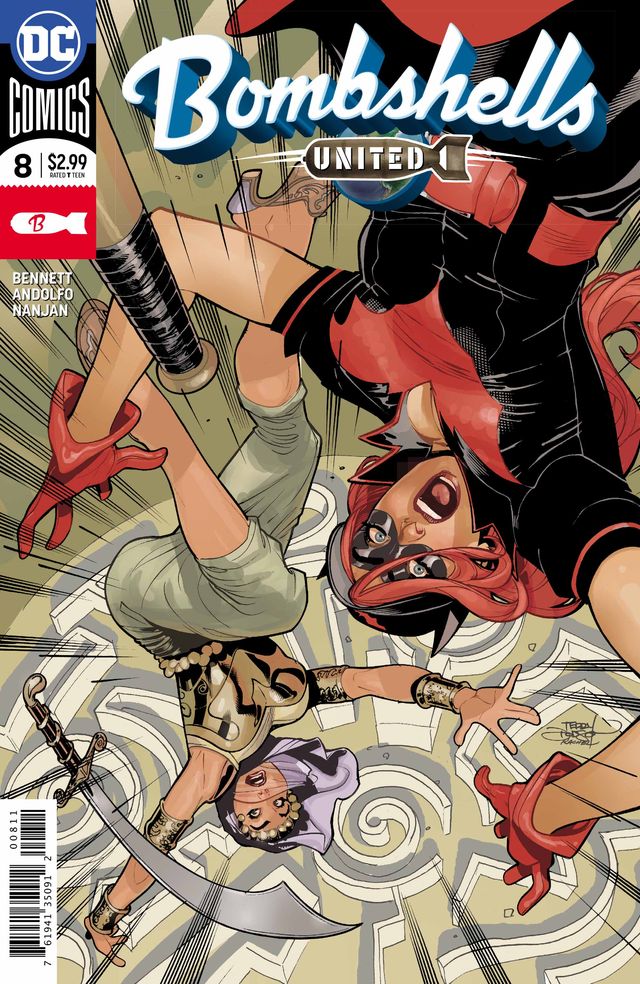
This comic has a lot of history. What were some of the images that inspired your illustrations?
Before starting a new chapter of Bombshells (but also in general), I always try to find good references and inspirations, according to the kind of story I have to illustrate. In this case, it was very interesting for me to search for inspiration. In particular, I really enjoyed working on a Spanish setting with a melange of different cultures and influences. I found many of my references in books, movies, and of cours,e the internet. Then, I had the opportunity to play with mixing various architectural elements.
When developing this story, were you able to have some input in the character development?
As for the story, it’s up to Marguerite [Bennet]: her scripts are always very precise and accurate, and I can simply understand how she wants a character to be developed. Then, after so many pages together, we have a very good feeling, and I’m happy to have the chance to play with the development of single characters, chapter after chapter. Every character in the Bombshells universe has a strong personality; they’re all well-rounded characters. As for me, I try to do my part letting the reader guess the personalities and the development of each character in their looks and expressions.
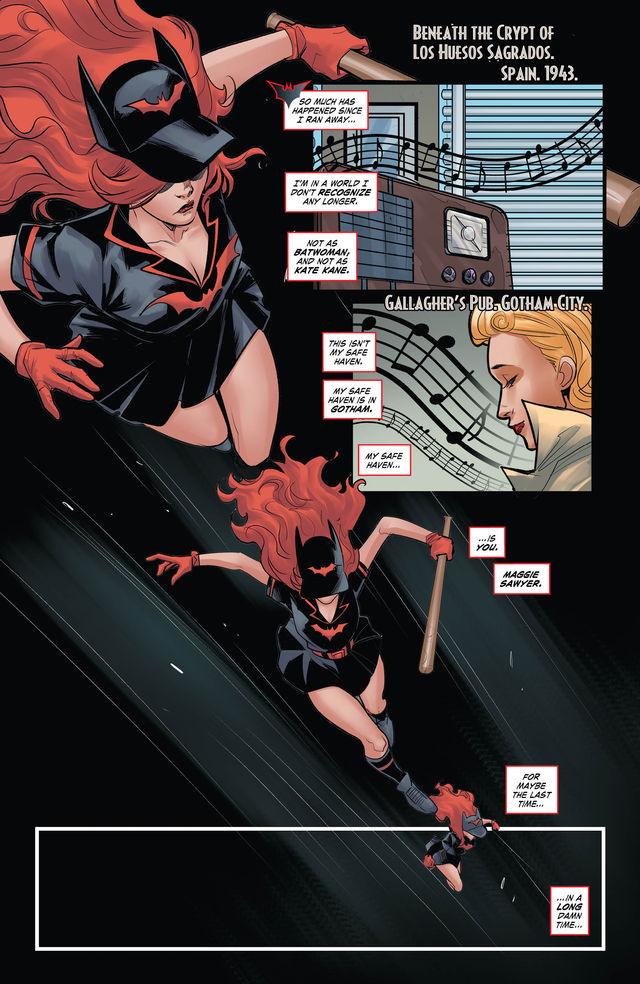
Is the character Renee supposed to be from the DR [Dominican Republic]?
Yes, she is. I have to admit I didn’t have a strong visual idea for the people from DR, but I had some references, so I had a quite a lot of work to do.
This comic has a lot of archaeology, and Renee is a scientist. What role did science and specifically archaeology play in your research and development of her?
Well, Renee is an archaeologist, and she has a different background in comparison to other characters in Bombshells, but I think that this is sensed by the reader from small details: maybe a look, an attitude. Apart from that, in the chapters where I “met” her, she was fighting, escaping, and a part of a lot of action sequences. That was so fun to draw!
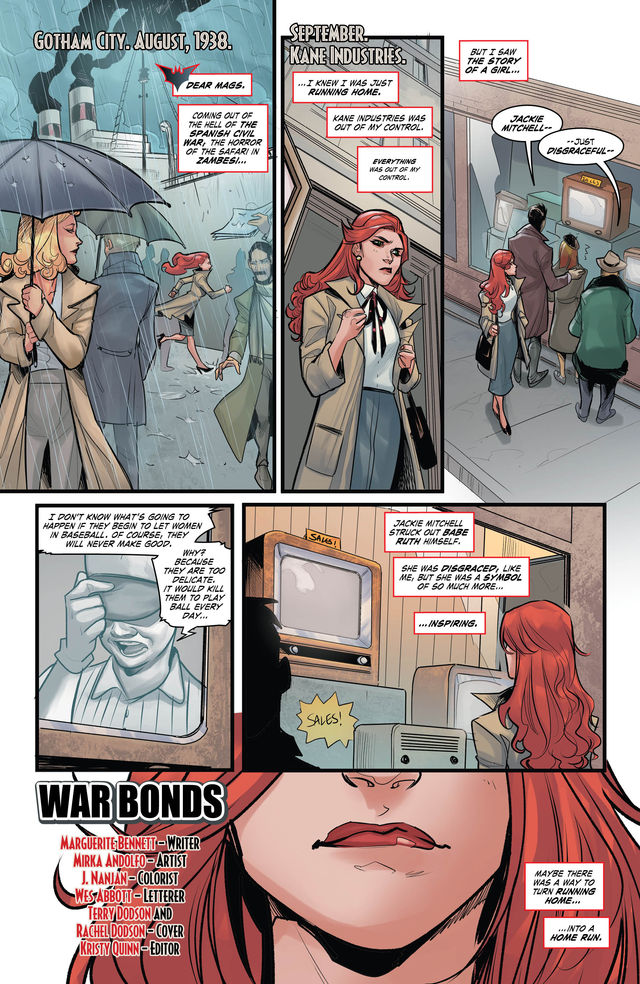
This comic also includes a same-sex couple and a fight against fascism — both these topics are very relevant. When you are creating artwork with such important topics, how do you use images in order to showcase empathy or understanding?
When I have to draw an image showing the love between two characters, I never think before about their gender: if it is a female and female, a female and a man, or a man and a man, well, I don’t care. I think that the most important part is to represent the feeling and the relationship between the two characters in an empathetic way. And that’s the same for every poignant topic we “talk” about in comics… I think it’s important, especially in drawing, to try not to be didactic. An important message must be well conveyed by a beautiful story, compelling, and well told.
In general, I really like to work with expressions and body language. I think one of the most important thing in making comics is to let readers know what the character is thinking about and what they are talking about wordlessly, as well as with the text. I hope the readers will understand what’s important to the person who wrote and drew the comic.
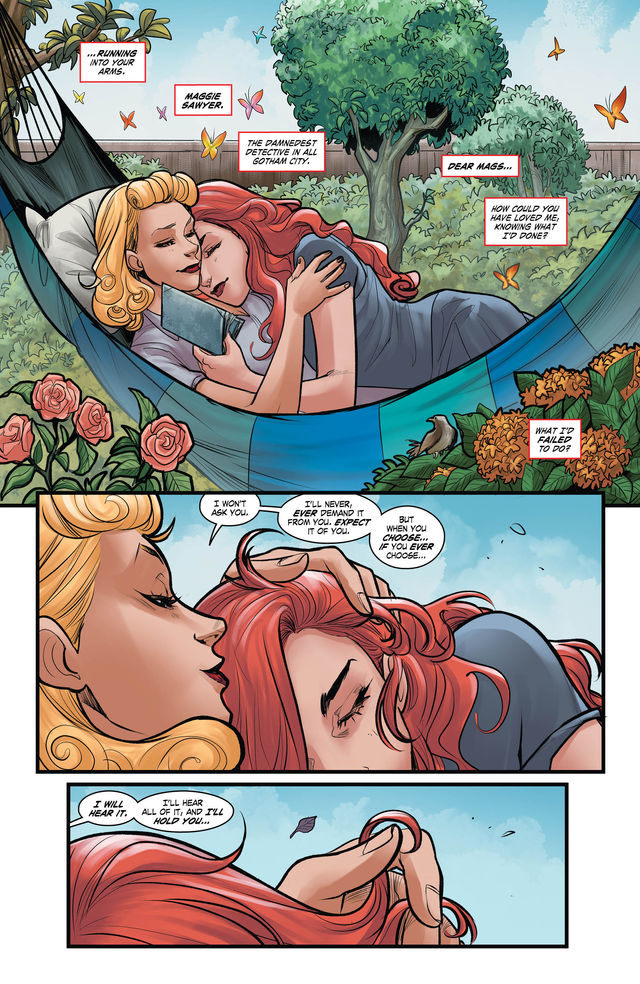
The comic also touches a lot on mythology and religion. What images inspired the character Talia Al Ghul, and what was it you are hoping comes across with your art work?
To be honest, the original design of almost all the main characters in Bombshells universe is by [DCU illustrator] Ant Lucia, so it was simple to me, I had an excellent starting point. Apart from that, I always enjoyed a lot of Talia as a character in the DCU, and I’m very interested in mythology (and religion, too), so I did look for references and symbols, and I enjoyed that a lot. I really like Talia’s clothes, and I tried to show she has a strong personality, especially working on her eyes. I hope I will have the opportunity to work again on her.
Bombshells United: War Bonds #8 and #9 can be found at your local comic books store. Issue #10 will become available on Jan. 17.
More from BUST
This Comic “Lady Killer” Shows A Woman Murdering Sexual Harassers — And It Comes At The Perfect Time
La Borinqueña Is The Puerto Rican Superhero We Need Right Now
Isabel Dieppa is a writer and actor. She is a part of the performance duo Of This World in Chicago, IL. Her interests lie in science, art, and history. Past writing includes interning for the Chicago Field Museum ECCO program, the national theater blog HOWLROUND, music reviews for UR Chicago, and in a former life was a beat reporter for the Indiana Daily Student. She loves archaeology, kitties, and dancing. The next big adventure may include an archaeological dig in Peru. Follow her on twitter @isabelsdieppa

